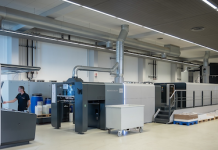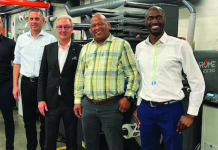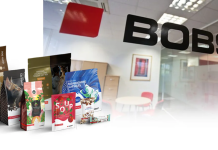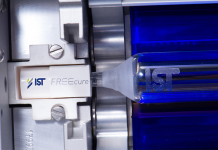Heidelberg is increasing automation in prepress and providing solutions to keep work moving in computer-to-plate with the introduction of two new optional Auto Pallet Loader (APL) systems for the Suprasetter 106 and 145/162/190CtP platesetters.
Heidelberg is enabling uninterrupted loading of up to 1200 printing plates in 106 format, or 600 in large format. That makes the systems a flexible and high-performance automation solution for computer-to-plate operations. The solution is particularly relevant for industrial-scale media service providers that are pursuing end-to-end automation in their printing process. The first companies to use the new Auto Pallet Loaders have been impressed by the technology:
Ferdinand Berger jun., senior manager at Druckerei Berger in Horn, Austria, said, ‘Our customers demand maximum quality in ever tighter timeframes and at good prices. We can only achieve that by implementing large-scale automation in our value added chain. Perfect printing starts with a perfect prepress stage. By investing in an Auto Pallet Loader for our Suprasetter 106, we have been able to make availability in prepress even better and ramp up the productivity of the process as a whole, while also reducing production costs.’
To achieve flexibility in changing up to three plate formats, print shops can run the 106-format Suprasetter in combination with the Auto/Dual Cassette Loader (ACL/DCL). When using the APL, personnel no longer have to insert the printing plates by hand. Instead, the plates stay on the Euro-pallet on which they are delivered. Using a hand pallet truck, personnel can quickly and easily move the plates up to the APL – from either side.
The APL for the Suprasetter 106, A106, and 106 UV models can be loaded with up to 1200 printing plates in this way. When using the APL for the Suprasetter 145, 162, and 190 formats, the total number of plates is up to 600, depending on their thickness. The APL also reduces errors and unnecessary interruptions, as manual loading often results in repeated unintended production stops due to scratched plates. Automated plate loading puts a stop to that.
The APLs are also integrated into the Remote Service portfolio that Heidelberg offers, which ensures rapid data analysis and error correction through Heidelberg Service.’The Auto Pallet Loader represents another step in the automation of industrial print production. Our customers can thus boost flexibility and production reliability in prepress,’ said Harald Weimer, member of the Management Board and responsible for sales and head of Heidelberg Services at Heidelberger Druckmaschinen AG. ‘The production process in prepress runs on an almost non-stop basis, with no need for manual intervention. That is another milestone on the way to achieving a smart print production.’
The Auto Pallet Loader can be retrofitted to all the aforementioned Suprasetter models manufactured during or after 2013, supports the maximum working speed of the relevant Suprasetter, and runs on a non-stop basis once loaded. When running, the APL 106 removes the slip sheets from the plates without leaving any marks and separates the individual plates using a sucker and blast air. On the APL for large formats, the printing plates are transported to the platesetter via a transfer table. As the coated sides of the plates in the large format are face-up, the Auto Pallet Loader for the large format is fully encapsulated to stop daylight affecting the plates.
Depending on requirements, the 106-format Suprasetter can be extended on a modular basis with the Auto/Dual Cassette Loader or Auto Pallet Loader with additional automation components. Another option is automatic plate edging with the plates then being sorted or stored in a magazine system until they are needed in the pressroom.





















